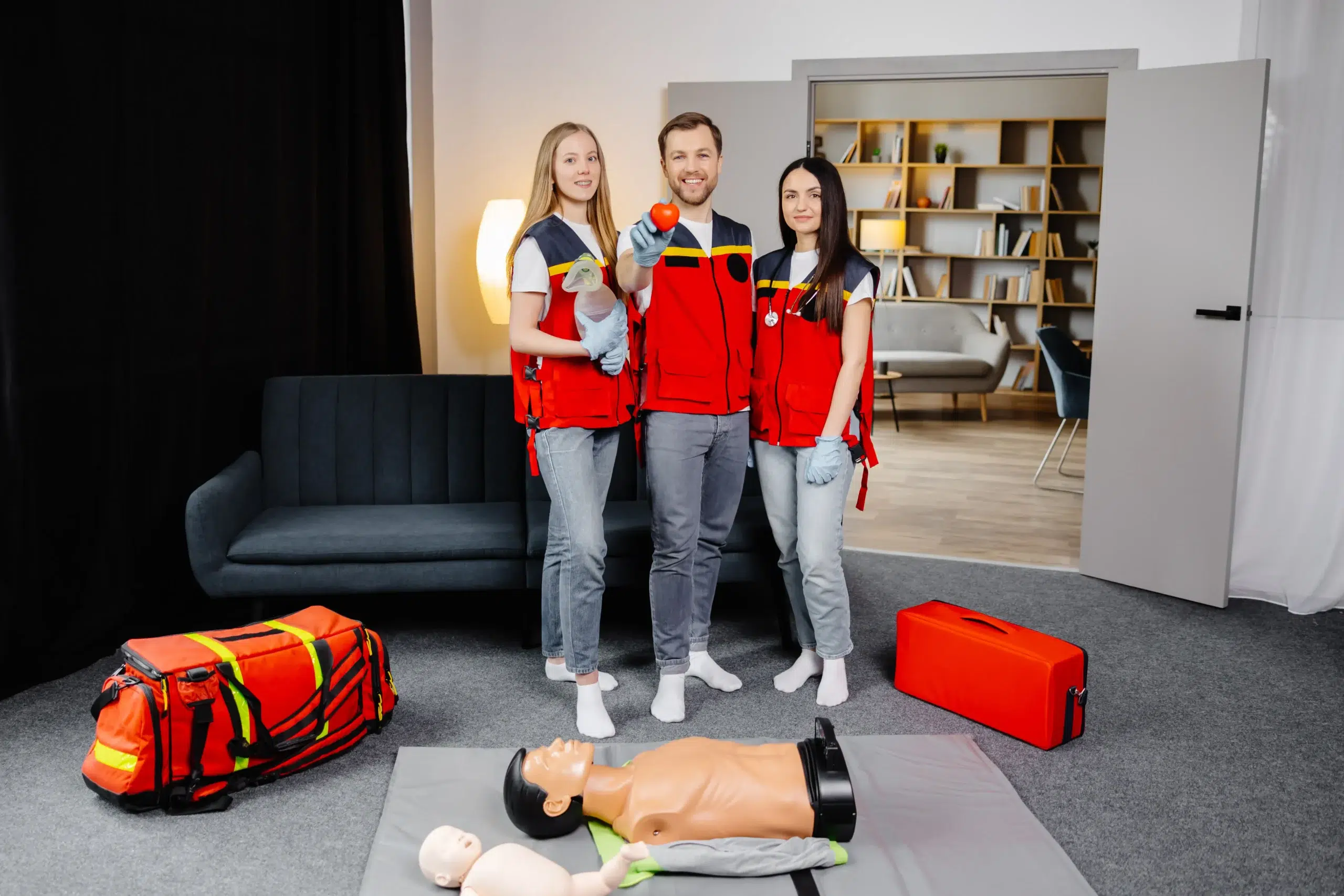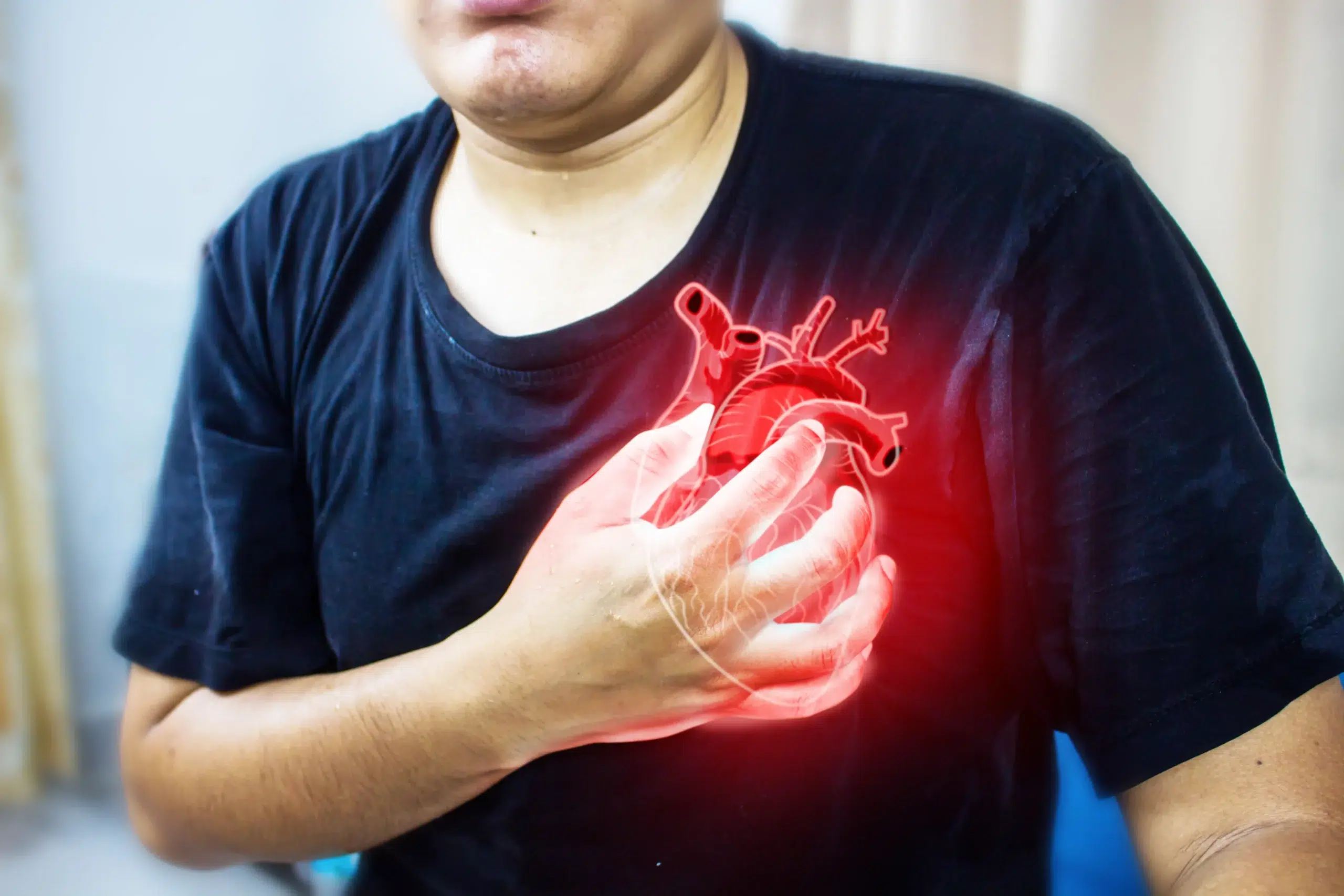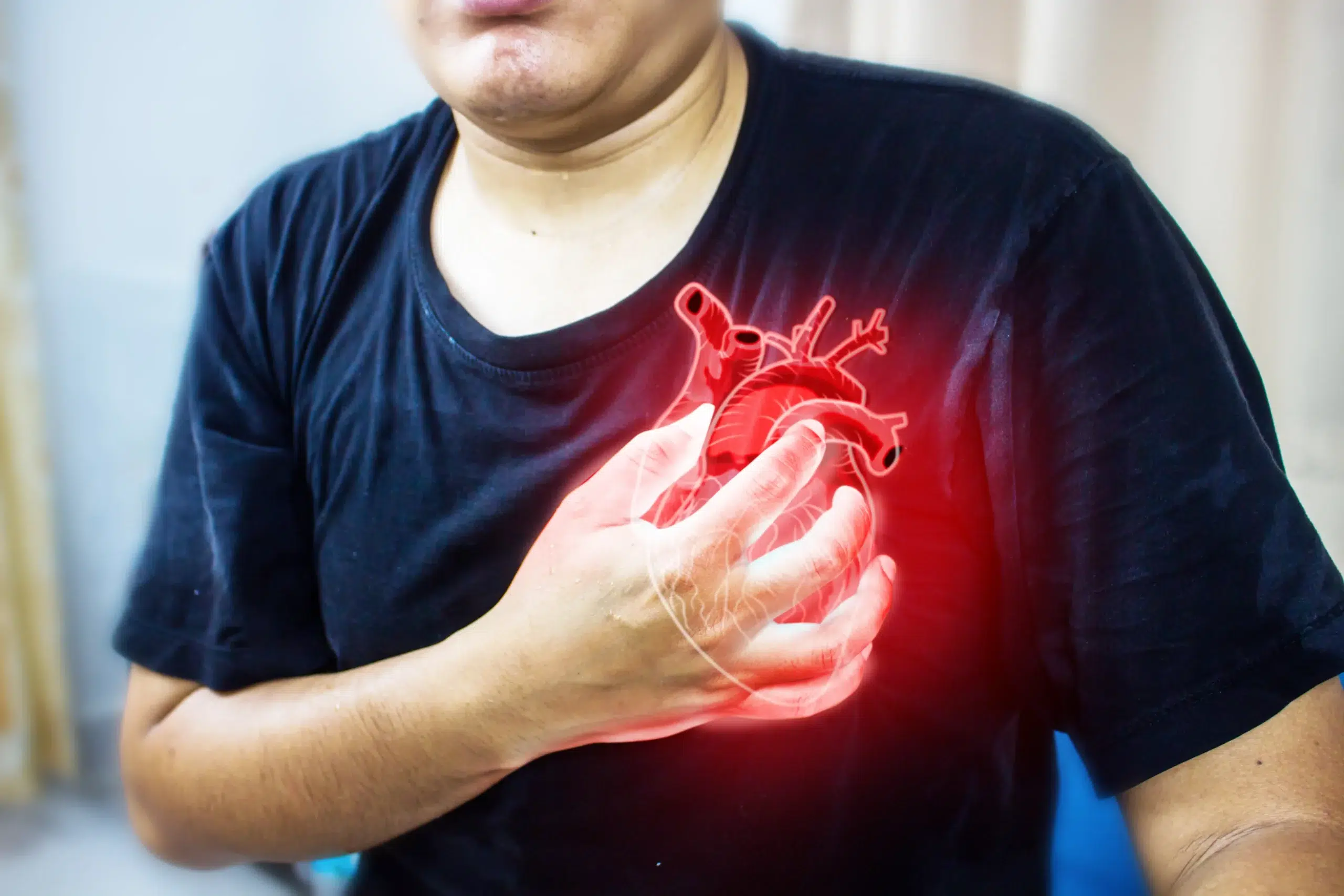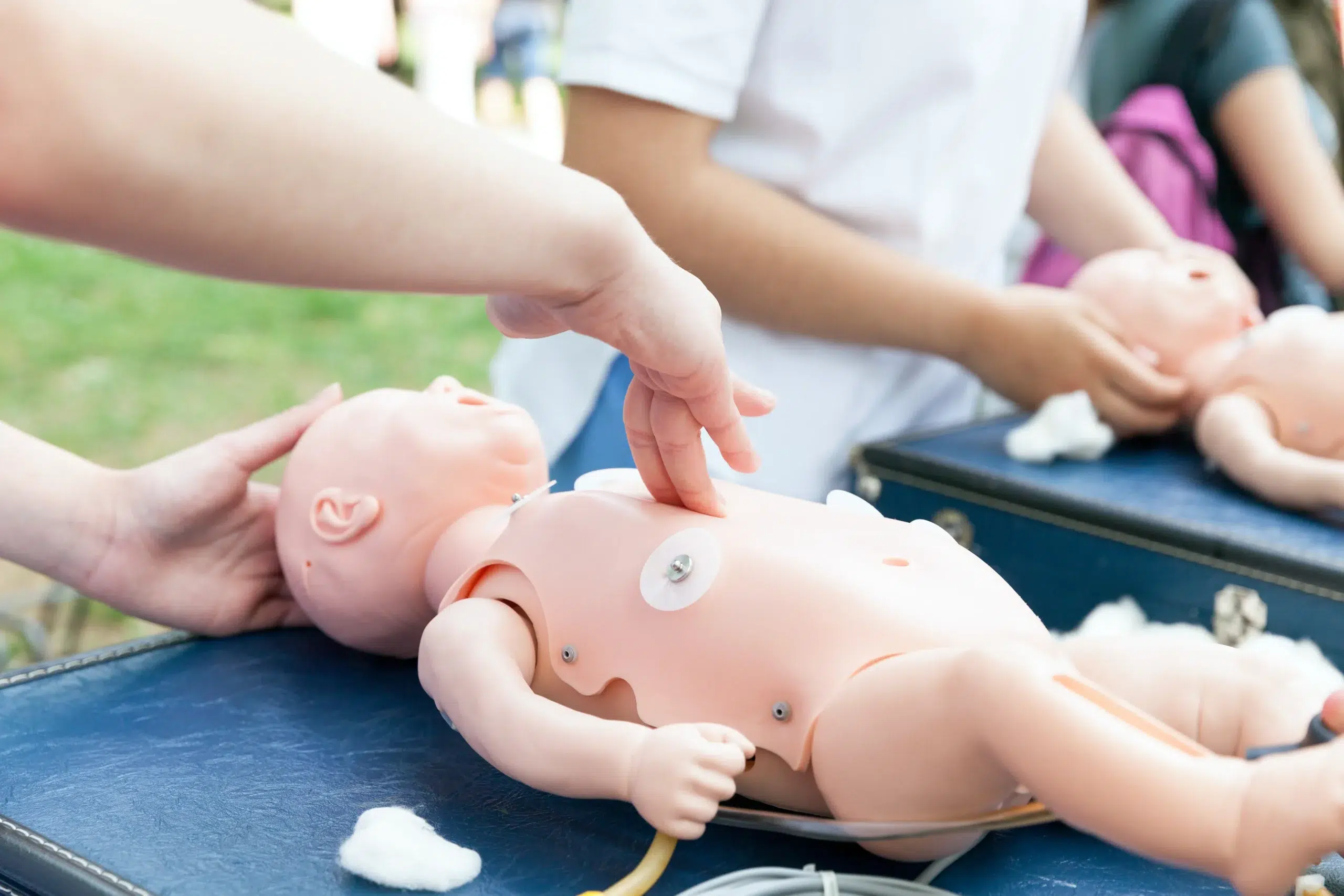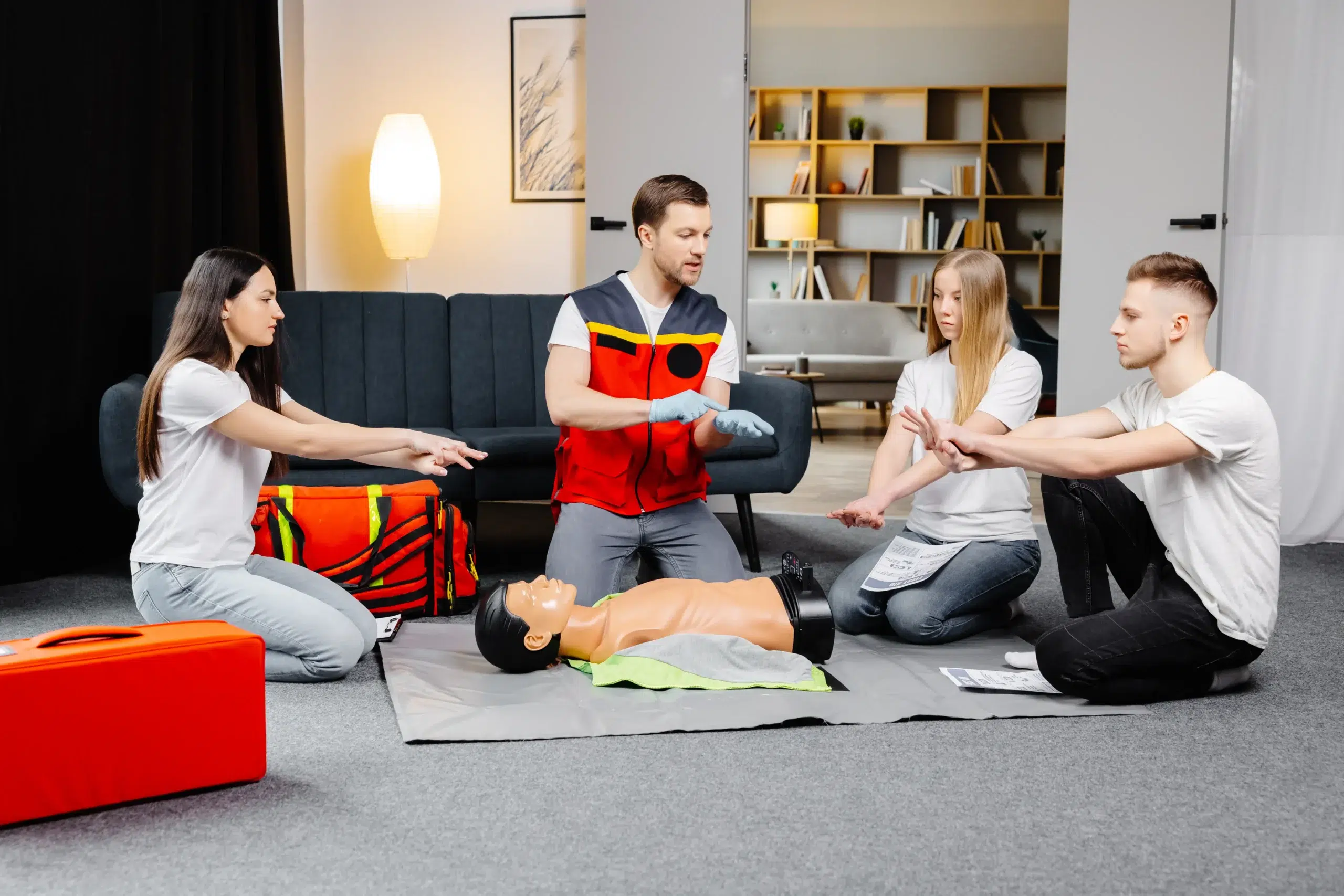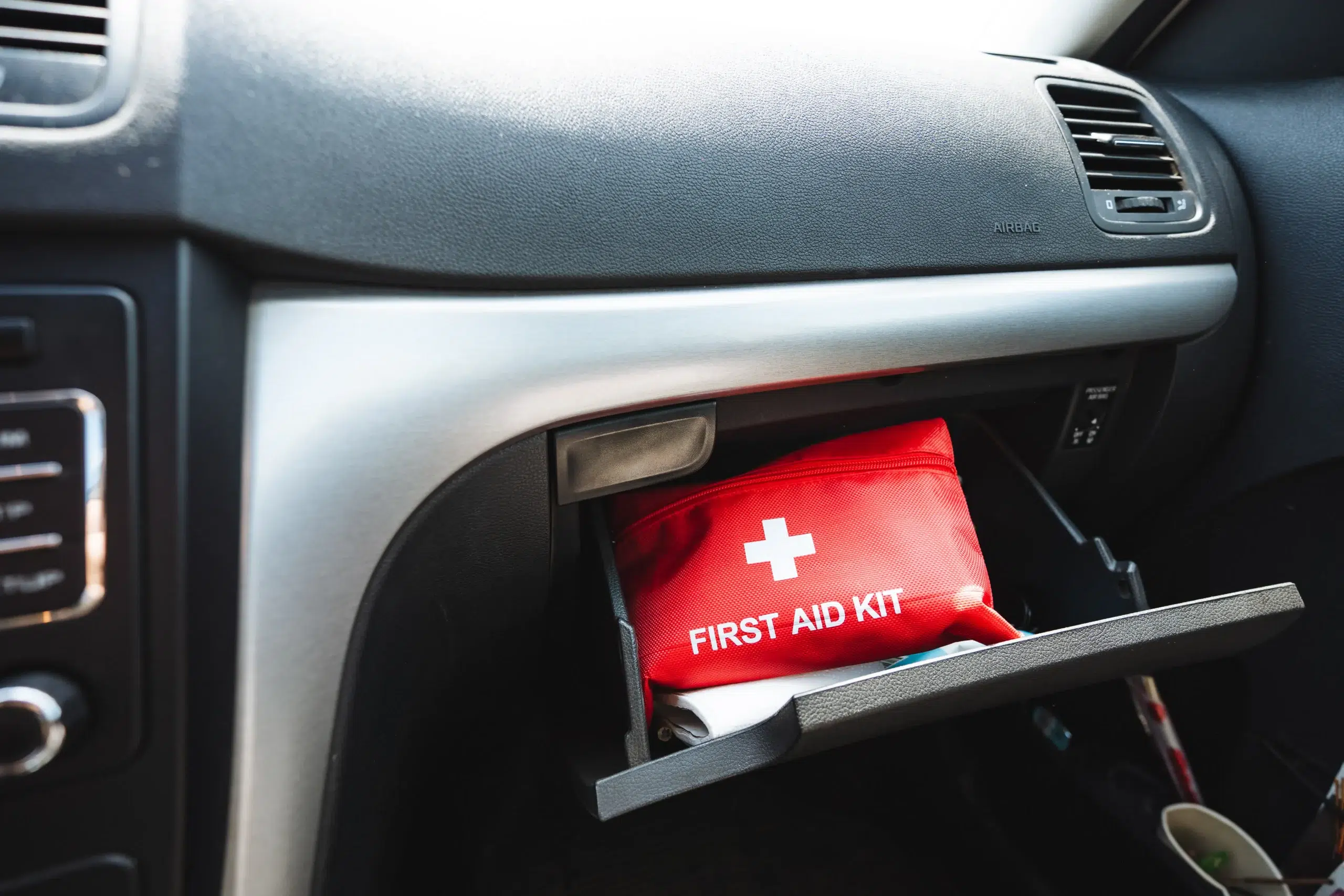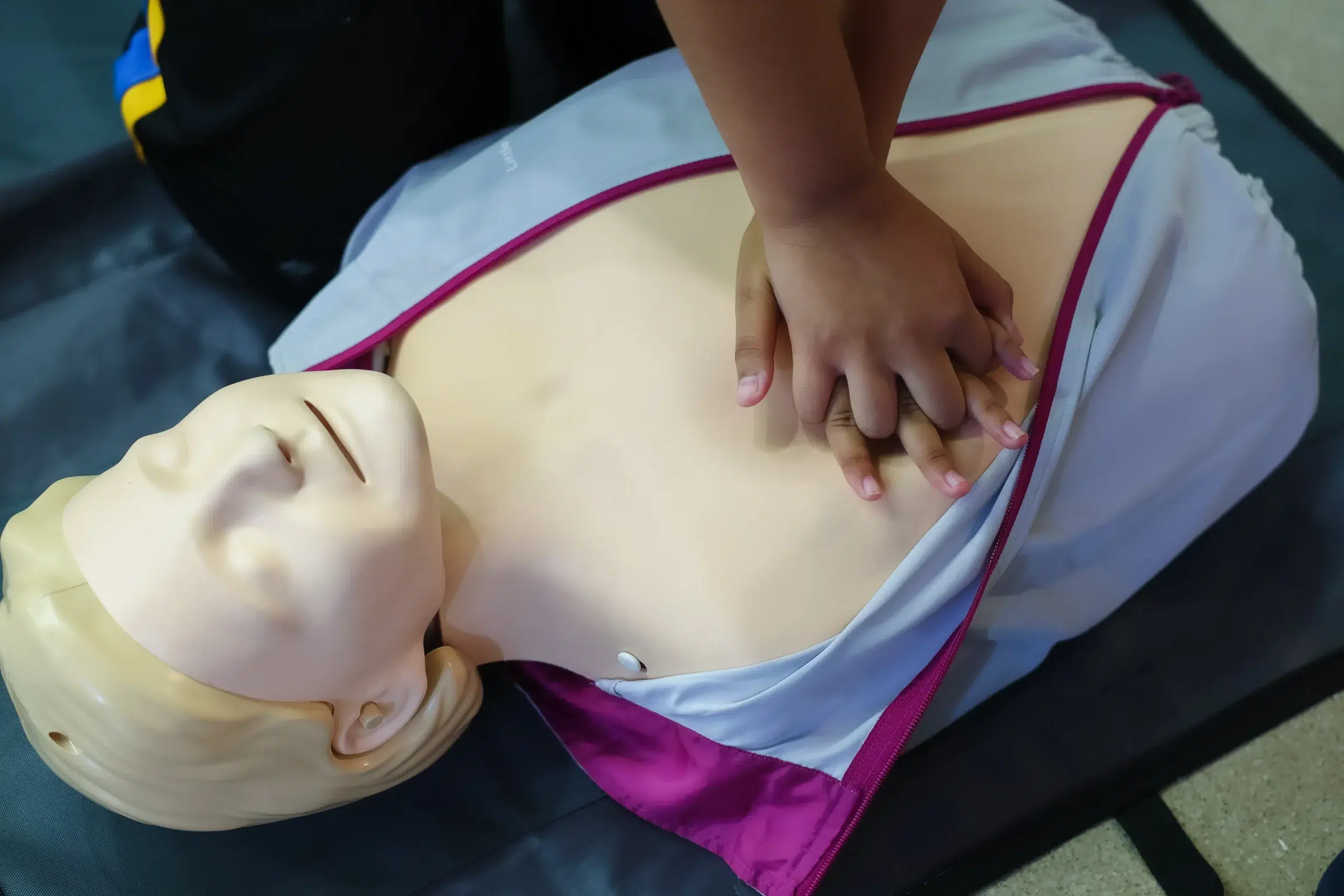In a medical emergency, seconds can matter. Basic Life Support (BLS) empowers you to act quickly and confidently when those precious seconds count. It goes beyond basic CPR, equipping you with a wider range of skills to handle various life-threatening situations. Whether you’re a healthcare professional or simply someone who wants to be prepared, BLS certification is a valuable asset. This article will break down everything you need to know about BLS, from what the training entails to how it can benefit your career and personal life. If you’re searching “BLS classes near me,” we’ll also guide you through finding the right course and maximizing your learning experience.
Key Takeaways
- BLS certification provides essential life-saving skills: From CPR and AED use to airway management, BLS training empowers you to confidently respond to medical emergencies.
- Finding the right BLS course matters: Look for AHA-approved courses with experienced instructors, hands-on practice, and convenient class times. Consider in-person, blended, or online options based on your learning style.
- Prepare for your BLS class to maximize learning: Review the BLS Provider Manual, focus on key concepts like high-quality CPR and AED use, and wear comfortable clothing for hands-on practice.
What is BLS?
Basic Life Support (BLS) certification gives you the skills to respond to medical emergencies. It’s about more than just CPR—it’s a comprehensive approach to providing immediate care in life-threatening situations. Whether you’re a healthcare professional or someone who wants to be prepared for anything, BLS training empowers you to make a real difference. For more information on CPR, check out our blog post on CPR classes.
What BLS Is and Why It Matters
BLS certification is vital for anyone in healthcare. It equips individuals with the knowledge and confidence to respond effectively during emergencies. From recognizing the signs of a heart attack to administering CPR, BLS training provides the tools to potentially save lives. It emphasizes early intervention and high-quality chest compressions, increasing the chances of survival. BLS certification is not just a credential—it’s a commitment to being prepared and ready to act when it matters most. We offer a variety of BLS courses in Roseville, CA. For healthcare professionals needing to renew their certification, our RQI program offers a flexible and convenient option.
Skills You’ll Learn in BLS Training
BLS training covers essential skills for responding to medical emergencies. You’ll learn how to perform CPR, use an automated external defibrillator (AED), and provide basic airway management. The training also emphasizes teamwork and clear communication during emergencies. You’ll practice these skills in a controlled environment, building the confidence to apply them in real-life situations. These skills are invaluable, not only for healthcare providers, but for anyone who wants to be prepared to help in a crisis. We also offer group discounts for those interested in training together.
Find a BLS Class Near You
Finding the right BLS class depends on your learning style and schedule. Let’s explore the different options available: in-person, online, and blended learning. Each format offers unique advantages, so consider what works best for you.
In-Person BLS Classes
In-person BLS classes offer hands-on training crucial for mastering life-saving techniques. You’ll work directly with instructors, practice on mannequins, and receive immediate feedback. This immersive experience builds confidence and proficiency in essential skills like CPR, using an AED, and airway management. If you learn best in a traditional classroom setting and value direct interaction, in-person training might be your ideal choice. Roseville CPR Classes offers a range of in-person BLS courses, along with ACLS and PALS. Their affiliation with Safety Training Seminars, an American Heart Association Training Center, guarantees high-quality instruction and certification. For those seeking group discounts, check out their options for group CPR classes.
Online BLS Classes
Online BLS classes offer flexibility and convenience, allowing you to learn at your own pace and on your own schedule. This format is perfect for those with busy lives or limited access to in-person training locations. You’ll typically complete the coursework online, then schedule a separate in-person skills session for hands-on practice and evaluation. This blended approach combines the convenience of online learning with the essential practical application of in-person training. Many providers, including Safety Training Seminars, offer this hybrid model. You can find reviews and testimonials about various CPR classes, including online options, on sites like Yelp.
Blended Learning BLS Classes
Blended learning BLS classes combine online learning with in-person skills sessions. This approach offers a balance of flexibility and hands-on practice. Programs like the RQI program, offered through Roseville CPR Classes and Safety Training Seminars, provide a convenient way for healthcare professionals to renew their BLS, ACLS, and PALS certifications. This format allows you to complete the cognitive portion of the course online, then demonstrate your skills in a shorter, focused in-person session. Blended learning is a great option for those who want the convenience of online learning with the reinforcement of hands-on practice and instructor guidance. It’s particularly useful for healthcare providers seeking to maintain their certifications while balancing demanding schedules. You can find more information on BLS certification and its benefits in this guide.
Choosing the Right BLS Provider
Finding the right BLS class involves more than a quick Google search. Here’s what to consider when evaluating different providers:
Accreditation and Certification
First, confirm the course is AHA-approved. The American Heart Association (AHA) sets the gold standard for BLS certification. Many employers, including hospitals and clinics, require AHA-approved certifications. This accreditation guarantees you’re receiving high-quality, evidence-based training.
Instructor Qualifications
Experienced, certified instructors significantly improve the learning experience. Look for instructors with real-world healthcare or emergency response experience. Their practical insights can make a real difference in your understanding and confidence.
Class Size and Format
Hands-on, in-person training is essential for developing the muscle memory needed for effective CPR. Online-only courses are insufficient for mastering these crucial skills. A smaller class size allows for more personalized instruction and feedback. Consider a blended learning format, which combines online coursework with in-person skills sessions. Roseville CPR Classes offers this flexible option.
Location and Accessibility
Convenient class locations and flexible scheduling are important, especially with a busy schedule. Choose a location that’s easy to reach and offers class times that work for you.
Reviews and Feedback
Reading reviews from past students can offer valuable insights into a training provider. Look for comments about the instructors, course content, and overall learning experience. Positive feedback can reassure you that you’re making a good choice. For example, students share their experiences with Safety Training Seminars on Yelp.
What Happens in a BLS Class?
A BLS class is more than just a lecture—it’s a dynamic learning experience. Here’s a glimpse of what you can expect:
Course Content Overview
BLS certification equips you with essential life-saving skills. You’ll learn CPR for adults, children, and infants, how to use an AED, and airway management techniques. The curriculum typically covers recognizing life-threatening emergencies, providing high-quality chest compressions, delivering appropriate ventilations, and the importance of early AED use. Understanding the chain of survival and effective team dynamics is also a key component. Roseville CPR Classes follows the latest American Heart Association guidelines, ensuring you receive up-to-date training.
Hands-on Practice
BLS training emphasizes hands-on learning. You’ll practice CPR techniques on manikins, giving you the muscle memory and confidence to perform compressions and rescue breaths effectively. You’ll also become familiar with using an AED in simulated emergency scenarios. This practical experience is essential for mastering the skills needed to respond confidently in real-life situations. For those seeking group discounts, Roseville CPR Classes offers options for teams to train together.
Assessment and Certification
To earn your BLS certification, you’ll demonstrate your skills and knowledge through a practical skills test and a written exam. The skills test involves performing CPR and using an AED on a manikin, while the written exam assesses your understanding of BLS principles and procedures. Upon successful completion, you’ll receive your BLS certification, valid for two years. For convenient recertification, Roseville CPR Classes offers the RQI program.
BLS Class Costs and Time Commitment
So you’re ready to sign up for a BLS class—fantastic! Naturally, you’re probably wondering about the investment involved. Let’s break down the typical costs and time commitment for BLS certification.
Average Costs and Factors
BLS class costs can fluctuate based on location, the training provider, and the type of course you choose (in-person, online, or blended learning). Our low price guarantee on BLS training ensures this important skill is accessible to everyone in the Roseville, Sacramento, and Rocklin areas. We believe competitive pricing makes essential training affordable for all. For comparison, in other metropolitan areas like Brooklyn, New York, BLS classes typically cost around $75. Remember to check with specific providers for the most up-to-date pricing in your region.
Typical Class Length
Most BLS classes are designed to be efficient and manageable, typically requiring around three hours of your time. This timeframe allows instructors to cover all the essential material, including CPR techniques, AED use, and how to respond to various medical emergencies. Three hours is a small investment for the confidence and skills you’ll gain.
Certification and Recertification
After successfully completing your BLS course, you’ll receive a certification valid for two years. This credential is essential for healthcare professionals and anyone else who needs to demonstrate proficiency in life-saving techniques. As your certification nears its expiration date, you can easily renew your credentials through a recertification course. These courses ensure you stay up-to-date with the latest guidelines and best practices in BLS.
Get Ready for Your BLS Class
So, you’ve signed up for a BLS class—fantastic! Now, let’s make sure you’re prepared to make the most of your training. Here’s what you need to know:
Required Materials
Most BLS course providers, including Roseville CPR Classes, adhere to the latest American Heart Association (AHA) guidelines. This often means working with the most current manuals and materials. Typically, your BLS provider will tell you about required materials when you register. Some courses may offer a digital option, while others might require a physical textbook. Check with your instructor or training center if you have questions about required materials. For Roseville CPR Classes, you can find more information on their BLS course page.
Study Tips
While BLS courses emphasize hands-on skills, understanding the underlying principles is essential. Reviewing the BLS Provider Manual beforehand will give you a solid foundation. Focus on key concepts like recognizing cardiac arrest, performing high-quality CPR (including the proper compression-to-ventilation ratio), and using an AED. High-quality CPR training covers these essential elements, ensuring you’re prepared to respond effectively in real-life situations.
What to Bring
Comfort is key during your BLS class. Wear loose, comfortable clothing suitable for hands-on practice. You’ll be moving around and practicing on mannequins, so athletic wear or similar attire is ideal. Bring a notebook and pen to take notes and jot down any questions. A water bottle is also a good idea to stay hydrated, especially during longer sessions. If your course requires a physical textbook, make sure to bring that as well. For specifics, check with Roseville CPR Classes about requirements for their courses, as they offer various options, including on-site training. They also have a low price guarantee, making this important training more accessible.
BLS Providers Near Roseville
If you’re searching for “BLS classes near me,” and you’re in the Roseville, Rocklin, or Sacramento areas of California, you have several solid options. Finding the right provider depends on your needs and preferences. Here’s a breakdown of some reputable choices:
Roseville CPR Classes
Roseville CPR Classes offers a range of courses, including BLS, ACLS, and PALS certifications, along with standard CPR and First Aid. Their affiliation with Safety Training Seminars, an American Heart Association Training Center, ensures high-quality instruction and AHA certification. This local option is convenient for those seeking comprehensive training and reliable credentials. For more details, check out their BLS course. They also offer group discounts, which is helpful for larger groups.
American Heart Association
The American Heart Association (AHA) sets the standard for cardiovascular health and provides the guidelines and curriculum for BLS training. While the AHA doesn’t directly teach classes, you can find AHA-certified courses through various training centers, including Roseville CPR Classes and Safety Training Seminars. To understand its importance, learn more about the AHA BLS course.
American Red Cross
The American Red Cross is another respected organization offering BLS training and certification. With online, in-person, and blended learning options, you can choose the format that fits your schedule and learning style. Explore their BLS training options on their website.
Safety Training Seminars
Safety Training Seminars provides a variety of AHA-certified courses in the Roseville area, including BLS, ACLS, and PALS. As an AHA Training Center, they adhere to high standards for instruction and certification, ensuring their training aligns with the latest guidelines. Find more information on their BLS classes in Roseville.
Local Hospitals and Medical Centers
Many local hospitals and medical centers also offer BLS training, often geared towards healthcare professionals but sometimes open to the public. Contacting hospitals in your area directly is the best way to learn about their programs, including schedules, costs, and prerequisites.
BLS Training Myths
Let’s clear up some common misconceptions about BLS training. These myths can create confusion and prevent people from getting the training they need.
“Online-Only Courses Are Enough”
While online BLS courses offer convenient self-paced learning, they’re usually only one piece of the puzzle. The American Heart Association (AHA) requires both an online component and an in-person skills assessment. You’ll need to demonstrate your skills in person to a certified instructor. This hands-on portion is crucial for mastering the techniques and receiving your AHA BLS certification. So, while the online portion is a great starting point, it doesn’t replace the practical training and evaluation you’ll get in person.
“BLS Is Only for Healthcare Professionals”
BLS certification is essential for healthcare providers like doctors, nurses, and EMTs. However, it’s incredibly valuable for anyone who wants to be prepared for an emergency. Think teachers, coaches, childcare providers, parents—anyone could find themselves in a situation where BLS skills are needed. The Red Cross points out that BLS equips people with the skills to respond to cardiac arrest, respiratory problems, and airway obstructions—skills that can make a real difference in any setting. Consider getting your BLS certification to be prepared.
“BLS Training Is Easy”
Some people breeze through the online portion of BLS training, while others find it more challenging. Everyone learns differently, and some might find the technology or online format a bit tricky. The in-person skills session adds another layer. While instructors at Roseville CPR Classes create a supportive learning environment, you’ll still need to demonstrate your skills competently. The best approach? Go in prepared to learn and practice, and don’t underestimate the importance of hands-on training. Roseville CPR Classes offers discount group class options to make the training even more accessible.
Benefits of BLS Certification
Getting your BLS certification offers advantages whether you’re a healthcare professional, pursuing a medical career, or simply want to be prepared for emergencies. Let’s explore some key benefits:
Career Advancement
BLS certification is often a job requirement for many healthcare roles. It signals to employers that you have the essential skills to respond effectively in critical situations. For those already working in healthcare, BLS certification can open doors to more specialized roles and potentially increase earning potential. Even in non-medical fields, having BLS training demonstrates a commitment to safety and preparedness, a valuable asset in any workplace. The American Heart Association (AHA) BLS course is a widely recognized and respected certification in the healthcare industry.
Personal Preparedness
BLS equips you with the confidence and skills to handle medical emergencies that can arise anywhere, from your home to a public space. Knowing how to perform high-quality CPR, use an AED, and provide basic life support can make a real difference. This preparedness not only protects you but also empowers you to help others in need. BLS certification gives you the tools to respond effectively and potentially save a life.
Community Impact
By becoming BLS certified, you contribute to a more prepared and resilient community. Cardiac arrest is a leading cause of death, and immediate intervention with CPR can significantly improve survival rates. Having more people trained in BLS strengthens the chain of survival in our communities. When more individuals are equipped to respond to emergencies, the chances of positive outcomes increase. Consider getting certified through a reputable provider like Safety Training Seminars to ensure you receive high-quality training.
Succeed in Your BLS Class
Acing your BLS class isn’t just about showing up—it’s about preparing yourself for success. These tips will help you feel confident and ready to learn these lifesaving skills.
Master Hands-on Skills
BLS skills are best learned through hands-on practice. Studies show that having ample opportunity to practice CPR and AED use on training models builds the muscle memory and confidence you’ll need in a real emergency. Don’t be afraid to ask your instructor for extra practice time or clarification on any techniques. Look for a class that prioritizes hands-on training. Roseville CPR Classes is one example of a provider that emphasizes this crucial aspect of learning.
Remember Key Information
Your BLS class will cover essential information like CPR steps, how to use an AED, and airway management techniques. Actively participate in discussions, take good notes, and ask questions. Review the material regularly, even after class, to reinforce what you’ve learned. The BLS Certification in Roseville guide offers a helpful overview of key topics.
Manage Test Anxiety
It’s normal to feel some anxiety about the BLS skills test. One of the best ways to combat test anxiety is to be truly prepared. Practice the skills regularly, visualize yourself performing them correctly, and focus on your training. If your class offers practice tests or simulations, take advantage of them. This will help you get comfortable with the testing environment and build your confidence. Remember, the goal is to learn these skills so you can help someone in need.
Related Articles
- BLS Classes in Sacramento: Your Complete Guide – Roseville CPR Classes
- BLS Certification in Rocklin: Your Comprehensive Guide – Roseville CPR Classes
- BLS for Healthcare Providers in Rocklin: A Complete Guide – Roseville CPR Classes
- BLS HeartCode Rocklin: Your Certification Guide – Roseville CPR Classes
Frequently Asked Questions
What’s the difference between BLS and CPR?
CPR is a specific technique used within BLS. BLS encompasses a broader range of skills, including CPR, AED use, and basic airway management, providing a more comprehensive approach to emergency care. Think of CPR as one tool in the BLS toolkit.
How long does my BLS certification last, and how do I renew it?
BLS certification is typically valid for two years. Renewal involves taking a recertification course, like the RQI program offered by Roseville CPR Classes and Safety Training Seminars, to refresh your skills and knowledge and ensure you’re up-to-date on the latest guidelines.
Is online-only BLS training sufficient for certification?
No. While online courses offer flexibility for the knowledge portion, the American Heart Association requires an in-person skills assessment to complete your certification. You’ll need to demonstrate your CPR and AED skills to a certified instructor.
Who should get BLS certified?
While essential for healthcare professionals, BLS certification benefits anyone who wants to be prepared for a medical emergency. Parents, teachers, coaches, and childcare providers, among others, can gain valuable skills and confidence to respond effectively in critical situations.
What can I expect during a BLS class?
Expect a dynamic mix of instruction and hands-on practice. You’ll learn the core principles of BLS, practice CPR on mannequins, and familiarize yourself with AED operation. The class culminates in a skills test and a written exam to assess your competency.


